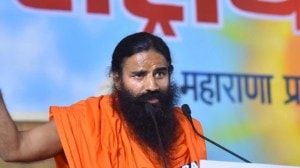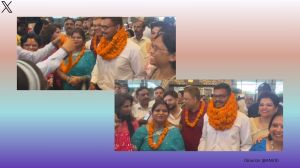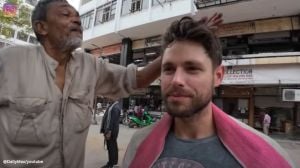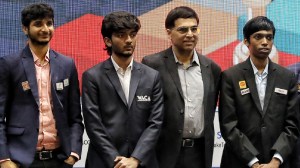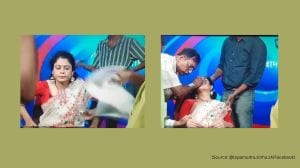- India
- International
Gurgaon: ‘My son was one then… How do I tell him now his father died over a cow?’
Ramesh, a former sarpanch who was one of those convicted, says he was falsely implicated. “My mother had passed away that night and I had gone for her last rites. Police killed the men,” he says.
 The 2002 killing is among the earliest reported instances of cow vigilantism in the country. (Express photo: Oinam Anand)
The 2002 killing is among the earliest reported instances of cow vigilantism in the country. (Express photo: Oinam Anand)
Sitting on a stool behind his cart, Devendra Singh, 47, says, “See how Dalits were flogged in Una. Between 2002 and 2016, nothing has changed. The story is the same. Like we stopped skinning cows after 2002, it is time for Dalits across the country to take a stand.”
The “story” Devendra, a vegetable vendor in Badshahpur village in Gurgaon district, talks about dates back to October 15, 2002, when a mob lynched five Dalits, one of them his brother Virender, in Jhajjar town of Haryana for alleged cow slaughter. The 2002 killing is among the earliest reported instances of cow vigilantism in the country.
Fourteen years later, the six upper-castes and one Dalit who were convicted by a lower court for the murders in 2010, and awarded life imprisonment, are out on bail. Their appeals are being heard in the Supreme Court.
When The Indian Express met the victims’ families, it was the first they had heard of the accused being out.
The five Dalits — Virender, Dayachand, Totaram, Raju and Kailash — had been lynched at the Dulina police post near Jhajjar town, in the presence of police officers and district officials. The mob, that witness accounts say included anywhere between 400 and 5,000 men, accused the five of slaughtering a cow.

Laxmi Devi was 22 when her husband Virender was killed. Accusing police of being responsible, she asks why no action has been taken against them. “The vehicle he was in was transporting cattle hide to Karnal. Police arrested them because they refused to pay a bribe on the way, brought them to the Dulina post, thrashed them and told villagers returning from Dusshera celebrations that the men had killed a cow. The crowd got agitated and lynched them. Yehi sachayi hai (That is the truth),” she claims.
Following her husband’s death, Laxmi was given a peon’s job at a local government school and now lives with her two sons and mother-in-law in Badshahpur village. “My youngest was just a year old when they killed Virender. I still don’t know how to tell him his father was killed over a cow,” she says.
The then divisional commissioner of Rohtak, R R Banswal, who conducted an inquiry into the killings, held 12 police personnel posted at the Dulina post “guilty of allowing the situation to go out of control”. The Banswal report, which said the incident was “not anti-Dalit”, also said 1,500 people were part of the mob and there were 71 police personnel on the spot.
SHO Rajinder Singh, who was one of them, says their hands were tied. “Villagers from Suhra (in Jhajjar district) had got the five Dalit men to the police station. Soon, news of the cow slaughter spread. Members of outfits such as Jhajjar Gurukul and the VHP turned up and some of them were part of the mob that killed the five men. We couldn’t fire because we were afraid some of the locals might get hurt,” Singh, who was posted out of Jhajjar after the incident, claims. He retired in 2009.
Sitting outside the Dulina post, nearly 50 km from the villages where the Dalits lived, ASI Rajesh Kumar points to a black door and says, “The villagers broke that door and pulled the Dalits out. The crowd overpowered the policemen… It wasn’t caste violence, just anger over cow slaughter,” he says.
Many of the men in the mob that night were from Suhra, a village near the Dulina post. Here, not many want to speak about the events of 2002.
Ramesh, a former sarpanch who was one of those convicted, says he was falsely implicated. “My mother had passed away that night and I had gone for her last rites. Police killed the men,” he says.
The victims’ families, spread out over Badshahpur and two other Gurgaon villages, are angry about the bail granted to Ramesh and others.
“Kya? Bail ho gayi (What? Have they got bail)?” asks a surprised Devendra, whose brother Virender was killed. “Out of 400 people, they sentenced just seven, and now even they are out!”
A kilometre away, Saroj Devi, 45, shudders remembering the 3 am knock on her door on October 16, 2002. “Three policemen in plainclothes said my husband (Dayachand) had had an accident. I rushed to Jhajjar hospital with my two-year-old son and three daughters. When we reached there, we were told to identify my husband’s body and leave. That’s it,” recalls Saroj.
The family has kept a photo of Dayachand’s body. One of the daughters, 17, pulls it out. “Look how brutally he was beaten,” says Saroj, who was given a peon’s job at a government school by the then Om Prakash Chautala (INLD) government. She earns Rs 25,000 a month.
After the incident, the nearly 300 Dalits of Badshahpur village gave up skinning cows. Says Saroj, “No one in the Hindu society wants to do this job. And even if they (her husband and others) had slaughtered a cow, wasn’t it the police’s job to protect them from the mob?”
Dayachand’s brother Dalchand, 33, says he would have been a skinner, too, if not for the 2002 incident. Now he runs a wedding catering business. However, he doesn’t take any contracts from Jhajjar. “Dar toh lagega hi (We are bound to be scared). I went for two hearings to the district court, where the upper-castes from villages in Jhajjar threatened us and openly bragged that they had killed the ‘gau-kashis (cow slaughterers)’. We stopped going for the hearings after that,” he says.
Raju, 17, was the youngest of the Dalits killed that night. His family ran a wedding band and owned the vehicle in which the five Dalits were travelling. “It was the first time we had rented our vehicle for transporting cattle hide,” says Ramphal, 55, Raju’s father, sitting at his home in Tikli, a village of 3,000 Dalits near Gurgaon.
Talking about the July 11 flogging of Dalits in Gujarat’s Una, he says, “There were several Dalit meetings after the 2002 attack. Sonia Gandhi, Ram Vilas Paswan, Mayawati, they all came. It seemed like things would change, but given what is happening in Una and elsewhere, things don’t look too different. We are poor, we are uneducated and we are Balmikis. Kuch ho sakta hai aise logon ka (What can people like us expect)?” says Ramphal.
Says Sunil Kumari, widow of Totaram, the driver of the vehicle who was also killed, “All governments are the same, they all claim to help us, but in the end we are left alone to fend for ourselves.”
After her husband’s death, she got the job of a clerk at the State Council of Educational Research and Training in Gurgaon.
An angry Santram, the former Dalit sarpanch of Akhlimpur, warns that casteism will finish society. “Soon, Dalits will leave this country. Why shouldn’t we become Christians or Muslims? What has Hinduism done for us?” he says.
Union minister Ram Vilas Paswan, however, claims things are different. “In the Una case, the government has pushed for speedy trial through special courts, but back in 2002, none of this happened. We had demanded a CBI probe then, but even that did not happen. It was a clear incident of caste violence but there was an attempt to dilute the case.”
Back at Badshahpur market, Devendra is packing up for the day. “I heard about the Dalit Maha Sammelan in Ahmedabad. Next time, even I will go,” he says.
Must Read
Apr 23: Latest News
- 01
- 02
- 03
- 04
- 05















